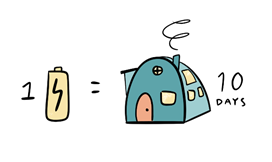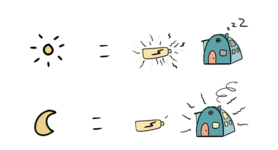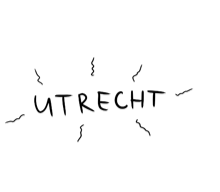Green on the Go
The electric car: a double-edged sword
Utrecht is the leading city in the world on a new application of electric cars: vehicle-to-grid. It started with the project Smart Solar Charging which will come to an end this year, but its results will only be implemented in greater numbers. This project, among others, convinced Hyundai to work together with the city and region of Utrecht to make it the first region in the world with a large-scale vehicle-to-grid system. In this system the battery in an electric car can be used to store energy, as well as supply this energy back to the power grid. With this method the use of green energy can be optimized. As an electric car doesn’t emit carbon dioxide when driving, and can be used in the vehicle-to-grid system when parked, it is a real double-edged sword in battling climate change.

The project Smart Solar Charging consists of six neighbourhoods in Utrecht where energy is locally generated with solar panels and stored in shared electric cars. Residents can get a subscription and make use of the cars, similar to the GO scooter system. The project is partially led by Bart van der Ree from the Utrecht Sustainability Institute: “Smart Solar Charging was founded on the promise to develop electric driving and the power grid. ” Its promising results and development of experienced teams made Hyundai choose Utrecht to test and implement their new electric car, suitable for vehicle-to-grid: the IONIQ 5. This collaboration with a major car dealer is a big step in the actual realization of an impactful vehicle-to-grid system.

In Utrecht, Smart Solar Charging has already resulted in 500 two-way charging stations for electric cars. These can be used by regular electric cars, as well as the ones suitable for vehicle-to-grid. In the beginning of 2022 Hyundai will provide Utrecht with 150 IONIQ 5s to be used as shared cars. “The battery in an electric car is so powerful that it can provide an average family’s home with energy for about 10 days.”, says Bart van der Ree, “Another way of saying this is that you only need 10% of the battery to power your house for one day, or that you only need a couple of cars to power a complete neighbourhood.” In comparison, you can drive 30 to 40 kilometres with 10% of an average car battery. This means the 150 IONIQ 5s together can store enough green energy to power 1500 houses. Internationally, the ideas of Smart Solar Charging are shared with and replicated in six other European cities such as Gotenburg (Sweden) and Nice (France) in the project IRIS.

Now let’s look at the inner workings of how this vehicle-to-grid system can help in making the world more sustainable. Two additional key factors in achieving this are smart charging and the use of shared electric cars. The situation in neighbourhoods right now is that there are great variations in power demand and in green energy production that do not happen at the same time: during the day people aren’t at home, while solar panels work optimally. In the evening it is the opposite, and throughout the seasons you have a similar problem.

On the website energieopwek.nl you can see these changes during the day and the year. With an increase in the use of private electric cars the peak demand in the evenings will only grow, which could overload the power grid. At the same time, with the number of green energy sources growing, a surplus of green energy can arise. The energy can then have a negative price (meaning you get paid for using energy!) as happened in February of last year, or be used in neighbouring countries. A better practice would be to find a way and place to store the green energy when abundant, and use it when needed, so we have less need for polluting energy sources such as natural gas.
In Smart Solar Charging they found this solution in the battery of an electric car. Electric cars are already around and growing in popularity: the most sustainable option then is to use their powerful batteries to their full potential. The next smart thing they did was use shared electric cars, and many of them. Having a great number of cars means the chance of always having a sufficient amount of them connected to the neighbourhood’s power grid is big. Lastly they made cars and charging stations suitable for vehicle-to-grid, instead of only one-way charging of the car. To really make an impact the system was implemented with smart charging. This means the car won’t start charging as soon as it is plugged in, but at a later time to reduce the peak power demand, when green energy is sufficiently available and/or when costs are lowest. All this combined gives room to green energy on the power grid.

Right now Utrecht is the leading pioneer on vehicle-to-grid systems in the world, and with the many follow-up projects it will probably remain to be that way for the near future. Its ideas are spreading through the Netherlands as other cities, such as Amsterdam and Maastricht, are also implementing vehicle-to-grid systems.
In the future it will then be likely you have access to a shared electric car; would you use this instead of a regular car? Let us know in the comment section.

